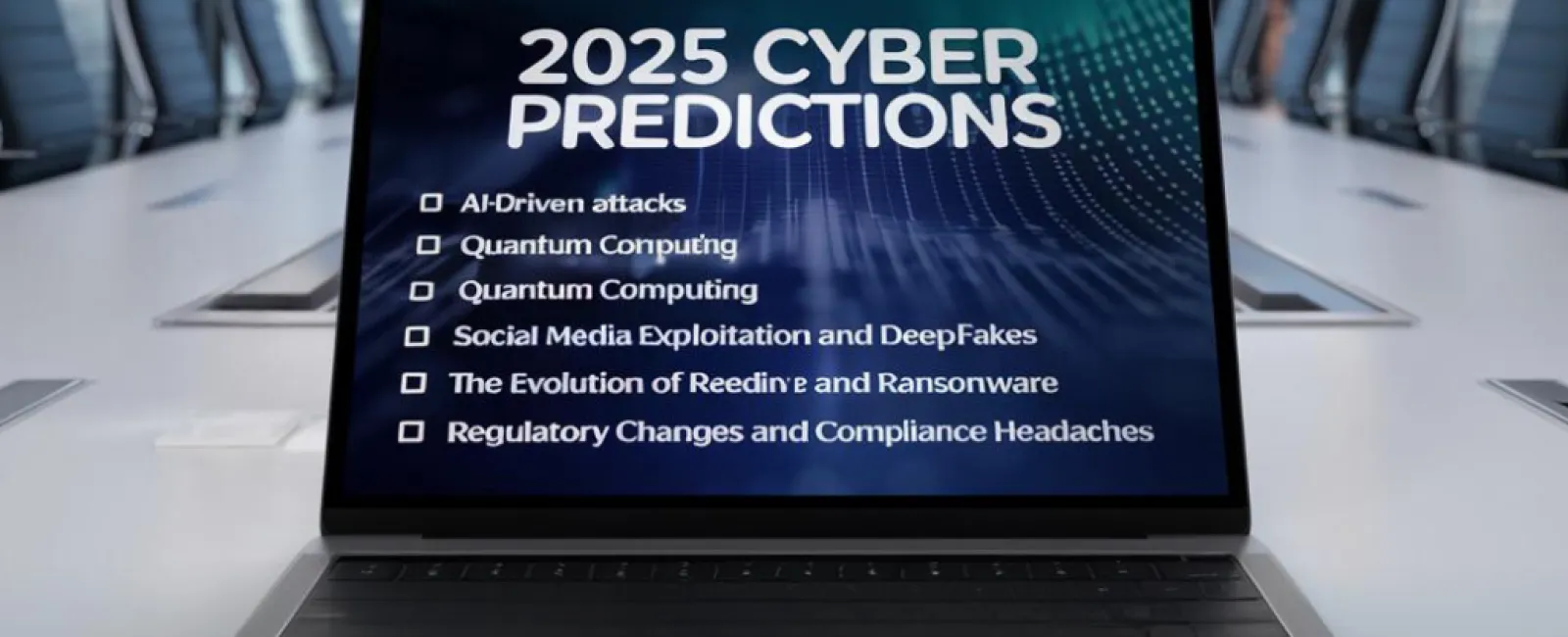December 09, 2024
Cyberthreats have progressed at such a rapid pace that what once felt like a concept from science fiction is now a stark reality. With the rise of AI-enabled cyber-attacks and the looming influence of quantum computing, the cybersecurity landscape of 2025 presents both innovative challenges and significant concerns. Here's an overview of some of the most pressing threats on the horizon and how small and medium-sized businesses can take proactive steps to prepare.
1. AI-Driven Attacks: Smarter, Faster And Harder To Detect
Artificial intelligence serves as a double-edged sword in the realm of cybersecurity. While it enhances defense mechanisms, it also fuels the capabilities of cybercriminals. By 2025, expect hackers to leverage AI for more effective phishing schemes, dynamic malware that adapts in real time, and automated attacks that outpace conventional security measures.
How To Prepare: Invest in advanced detection technologies that utilize machine learning to identify these sophisticated attacks. Train your employees to recognize AI-enhanced phishing attempts that appear highly personalized and credible. To stay ahead of AI threats, you need a combination of robust technology and human vigilance.
2. Quantum Computing: The End Of Encryption As We Know It?
Once a theoretical concept, quantum computing is advancing rapidly and threatens to undermine many current encryption methods. Unlike traditional computers that process data in bits, quantum computers utilize qubits, enabling them to perform complex calculations at unprecedented speeds. This transition won't happen overnight, but by 2025, quantum advancements could start breaching our data protection measures, giving hackers unprecedented access to encrypted information.
How To Prepare: Begin researching quantum-resistant encryption if you haven't already. Although it may seem premature, early adopters will have a strategic advantage as quantum technology evolves. Incorporating this into your long-term cybersecurity plan is essential to avoid being caught off guard.
3. Social Media Exploitation And Deepfakes: The Misinformation Machines
Social media is a powerful platform that can be used for both positive and negative purposes. By 2025, we can anticipate a rise in the use of social media for misinformation campaigns and advanced social-engineering attacks. Additionally, deepfakes—realistic but fabricated audio and video content—can be employed to impersonate trusted figures, such as executives or clients.
How To Prepare: Foster a culture of verification within your organization. Encourage employees to exercise caution with unexpected requests, even those that seem legitimate. Training and awareness are vital defenses, equipping your team to identify signs of manipulated content and social media scams before they fall victim.
4. The Evolution Of Ransomware: It's Getting More Personal
Ransomware attacks have evolved beyond simple data encryption; they now often involve data leakage. By 2025, the trend of double extortion will likely become standard, where cybercriminals not only lock down systems but also threaten to release sensitive information if their demands are not met. New sectors are being targeted, including critical infrastructure, healthcare, and supply chains, where breaches could have devastating consequences.
How To Prepare: Strengthen your incident-response planning and invest in backup solutions that enable quick recovery without the need to pay a ransom. Regularly test your backups and keep them off-network whenever possible to protect them from attackers. While ransomware may be inevitable, being well-prepared can prevent it from crippling your business.
5. Regulatory Changes And Compliance Headaches: It's Time To Step Up
As cyber threats increase, governments worldwide are tightening regulations surrounding data protection and cybersecurity. By 2025, businesses can expect to face stricter requirements regarding data handling, privacy, and incident response. Navigating these regulations will be challenging, particularly for companies operating on an international scale, where compliance demands can differ significantly.
How To Prepare: Stay informed about regulatory changes in your industry and region. Assign a team member or hire a consultant to monitor these developments and ensure compliance. Integrating compliance into your cybersecurity strategy not only mitigates legal risks but also enhances your overall security framework.
Conclusion: Get Ready For The Future Of Cybersecurity
Cyber threats are not diminishing; they are evolving, adapting, and becoming increasingly sophisticated. The best way to prepare is to take action now. Equip your business with AI-driven defenses, investigate quantum-resistant encryption, train your team to detect deepfakes, strengthen your ransomware response plan, and ensure your compliance efforts are current.
If these predictions have you rethinking your cybersecurity strategy,
now's the time to act. Reach out for a FREE 15-Minute Discovery Call,
and we'll help ensure your business is ready to face the future of
cybersecurity head-on. Click here or call us at 214-845-8198 to schedule
now!



